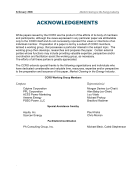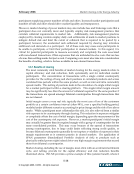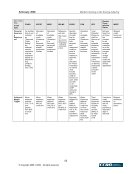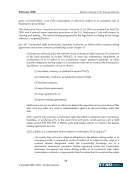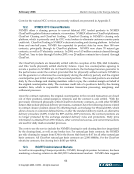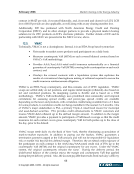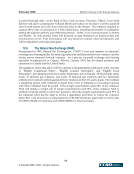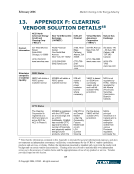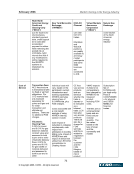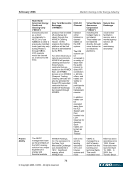February 2006 Market Clearing in the Energy Industry 5-38 © Copyright 2006, CCRO. All rights reserved. participants supplying greater numbers of bids and offers. Increased market participation and numbers of bids and offers should drive market liquidity and transparency. However, market clearing of power markets may also include fees and brokerage costs that a participant does not currently incur and typically employ risk management practices that correlate collateral requirements to market risk. Additionally, risk management practices employed by clearing vendors employ daily cash settlements of mark-to-market positions to mitigate default risk and limit the extent of collateral that is required to be posted by a participant however, the accelerated cash settlement required by clearing may introduce additional cash demands on a participant. All of these costs may cause some participants to be unable to participate, or limit their participation in cleared markets. In this regard, it is critical for potential participants to measure accurately and completely the costs associated with non-cleared transactions. Often exposures that are unfunded involve costs that are less obvious than settling marks but just as real. Comparing costs must also take into consideration the benefits of netting, which is far less available in non-cleared transactions. 5.6.1. Benefits of clearing The most commonly cited benefits of market clearing for the energy markets relate to capital efficiency and risk reduction, both systemically and for individual market participants. The concentration of transactions with a single central counterparty provides for the netting of long and short positions in correlated products and across correlated time periods within the same product, as well as inter and intra commodity spread credits. This netting of positions leads to the calculation of a single initial margin for a market participant within a clearing platform. This single initial margin amount may be significantly less than the amount of collateral required for the same position if the transactions are spread amongst bilateral counterparties through transactions that are not cleared. Initial margin covers a very real risk: typically the worst case of loss of the customers portfolio at a certain confidence interval (often 99%), over a specified holding period, modeled under different scenarios accounting for price change and the risk of loss above marks. While a participant must collateralize this risk, it is also relieved from a similar risk exposure to its counterparty through clearing. This reduction in exposure mitigates or completely offsets the cost of initial margin, depending upon the measurement of the cost of the counterparty risk exposure. However, a market participant’s initial margin may actually be greater than its required margin with a group of counterparties for the same consolidated position. This may occur because of the spread of transactions among counterparties, due to large credit limits reflecting strong credit quality, or because bilateral counterparties generally do not capture a volatility of exposure in their margin requirements as is common practice in cleared markets. The application of SPAN parameters (Standardized Portfolio Analysis of risk) to products such as physically settled power might indeed drive very high margin requirements that exceed those from bilateral counterparties. Market clearing, including the use of margin, most often with an accelerated settlement cycle, and netting, provide for the capital efficiency and risk reduction benefits illustrated above. ISO-NE provides a prime example of this systemic benefit, where it
Purchased by unknown, nofirst nolast From: CCRO Library (library.ccro.org)


